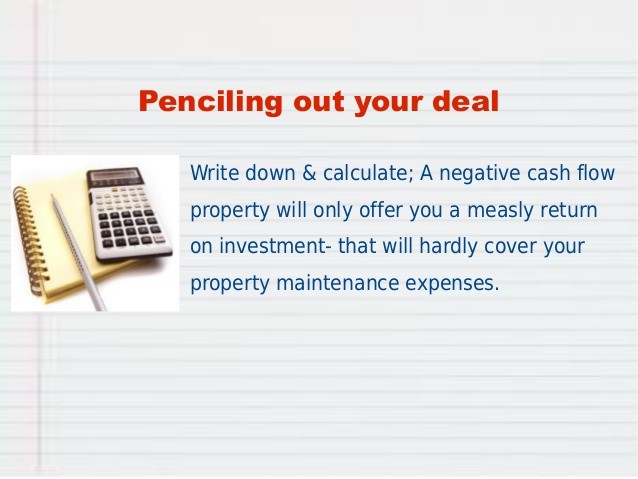Calculate the Return on Your Real Estate Investment Property
Post on: 24 Май, 2015 No Comment

Before you commit to purchasing any real estate investment property, calculate your return on investment, or ROI. To do this, you need to know the cost of the property, including any mortgage interest and property taxes, and the gross annual income you expect to receive from rent.
Yield and gross rent multiplier
The yield of an investment property is the gross annual income divided by the sale price multiplied by 100. This gives you an annual percentage gross ROI. Although it’s not the most useful indicator of the property’s economic value, it is quick and simple to work out. For example, if you receive a rental income of $1,200 a month, or $14,400 annually, on a $150,000 house, the yield would be 9.6 percent.
The gross rent multiplier, or GRM, is effectively the yield in reverse. Instead of dividing the annual rent by the sale price to work out an annual percentage return, you divide the sale price by the gross annual rent to work out how many years it will take to earn the purchase price of the property in rental income. So, if you use the example of the $150,000 house earning $14,400 annually in rent, you will find it would take 10.42 years to earn the purchase price in rental income.
Neither the yield nor GRM amounts take additional finance and ownership costs into account.
Debt coverage ratio and cash-on-cash return
The debt coverage ratio, or DCR, and the cash-on-cash return, or COC, are figures that can help you work out whether your rental income covers cost of ownership and warrants the initial cash investment.
To calculate DCR, divide net operating income by the annual mortgage payment. So, if property taxes, building maintenance and other costs come to $3,500 per year, the $14,400 rental income on the example would be reduced to a net operating income of $10,900. If the annual mortgage payment is $6,000, then the DCR is a healthy 1.81. If the annual mortgage repayment is $9,000, it’s a less promising 1.21.
The COC is your cash flow before taxes (rental income minus mortgage repayments) divided by the initial cash investment in the property, expressed as a percentage. So, if in the example you made a $50,000 deposit and took a $100,000 mortgage on which you repay $6,000 annually in mortgage payments, that leaves you with a cash flow of $8,400 before taxes. When you divide this by the initial $50,000 investment, you get 0.168, or 16.8 percent.
Total return on investment
The total return on investment, or TROI, tells you how well a real estate investment has performed overall after you sell it. By playing with the numbers, it can also give you an idea of how much a property needs to appreciate over time to be a good investment.
To calculate TROI, take the total before-tax cash flow during the time you owned the property (or intend to own it) and add it to the net sales proceeds, minus the initial cash investment, then divide the total by the initial cash investment.
Let’s say you own the example property for five years. Assuming no rental increases, your total before-tax cash flow would be $42,000 ($8,400 multiplied by 5).
If your mortgage had a 4.25 percent interest rate, you would have an outstanding balance of about $90,600. The exact amount will vary depending on the timing of your payments and how your lender applies them and calculates interest, but you can use a loan amortization calculator to estimate the balloon payment, or outstanding amount, after a given length of time.
Assuming the property appreciates at a modest 2 percent per annum over the term of ownership, it would be worth about $165,600, ($150,000 plus 2 percent compounded over five years).
If selling expenses total about 5 percent of that, they would be $8,280. The net sales proceeds would then be $165,600 minus $90,600 minus $8,280, for a total of $66,720.
The total return on investment in this example then would be $42,000 before-tax cash flow plus $66,720 net sales proceeds minus the $50,000 initial investment for a total of $58,720. Divide that by the initial investment of $50,000, and you get a return on investment of 117 percent.
While playing with the numbers can give you an idea of the potential return on real estate investment property, it will not help you forecast the market. Numbers only show the effects of changes in property prices or rental incomes.
Similar Questions on Ask.com














